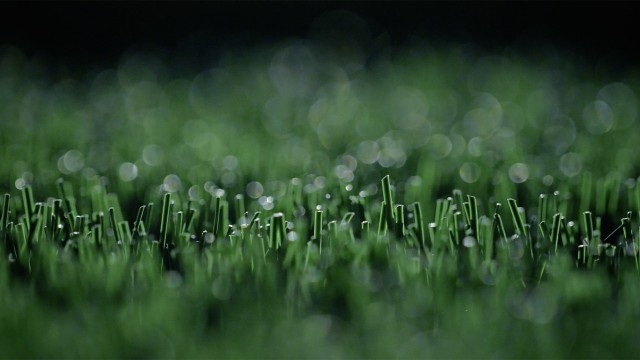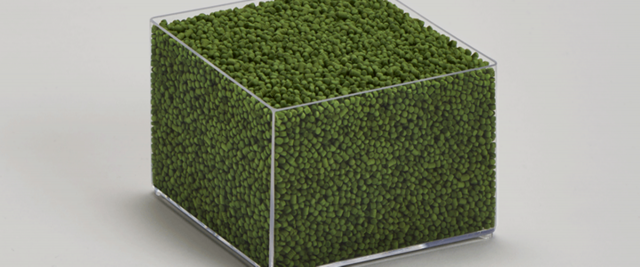Up until recently, the main performance infill material in artificial turf has been styrene-butadiene rubber (or SBR), which offers powerful resistance to abrasion, wear and water. This made specifying infill easy for architects and clients, because SBR generally weighs the same and occupies the same volume.
Now, however, with increasing interest in the use of alternative infill materials that include cork, sand and thermoplastic elastomer (TPE), the bulk density of infill changes depending on the material used. One pound of SBR, for example, does not occupy the same volume as one pound of TPE.
Adding to the confusion is the fact that not all types of TPE occupy the same volume. Unlike SBR, TPE comes in a wide variety of weights; some TPE granules are overly heavy, requiring more of them to occupy the same volume as lower-weighted TPE granules.
In an example featuring two types of TPE, each in a glass beaker with equal volume, one TPE variety weighs 460 grams while the other one weighs 773 grams. Both materials are the same type and have been designed to remain stable in artificial turf systems, but their weight difference is significant.
REMEMBER: The heavier the material, the more of it that will be required.
As a result, field owners could wind up paying more for heavier TPE when a lighter type of TPE that weighs closer to SBR rubber would suffice.
The same principle also applies with other alternative infill materials.
Therefore, it’s critical to understand the pros and cons of each infill system under consideration and recognize the incremental costs affiliated with the differences in bulk density of various infill products.
During the specification process of your artificial turf field, don’t hesitate to ask questions; you could save thousands of dollars in installation costs.


